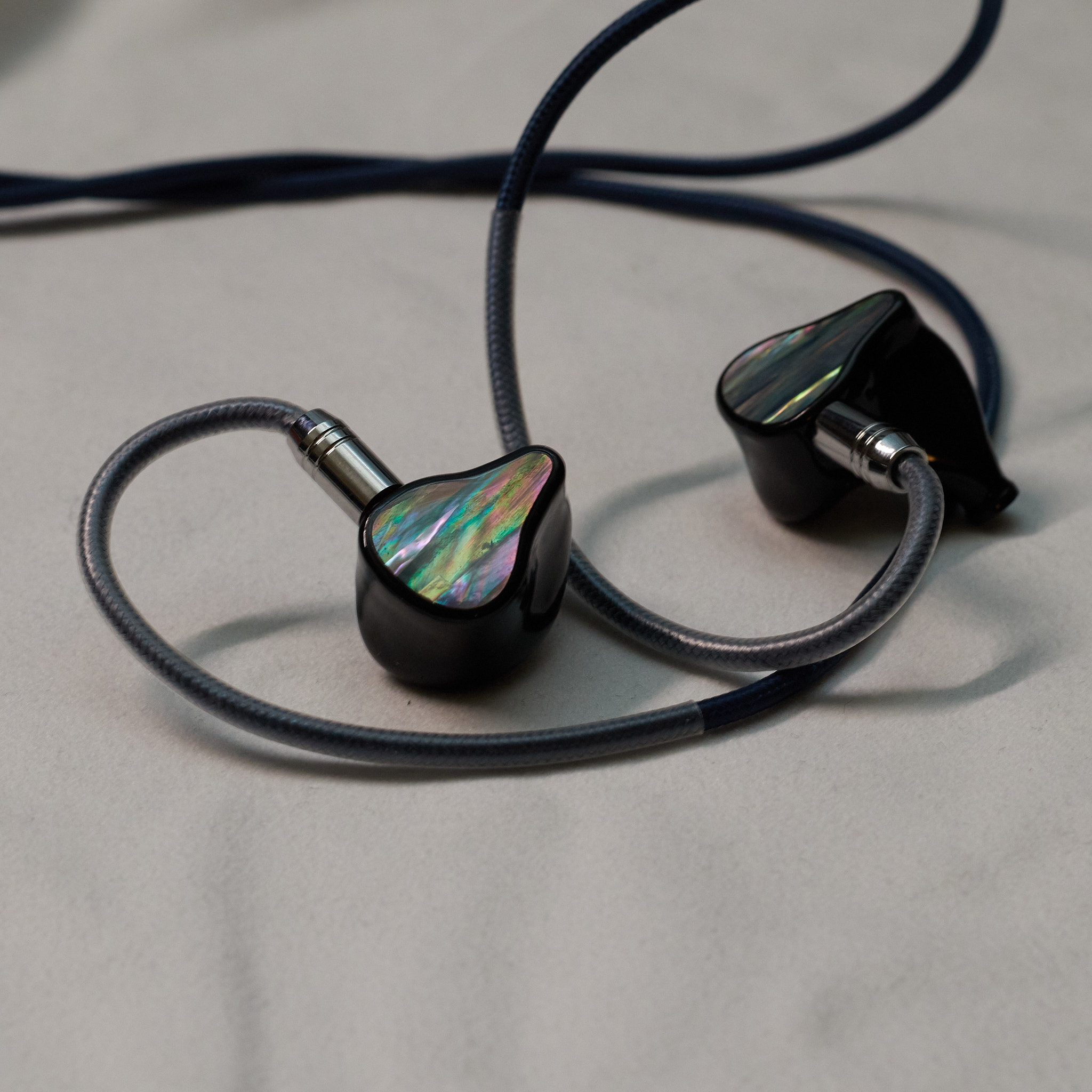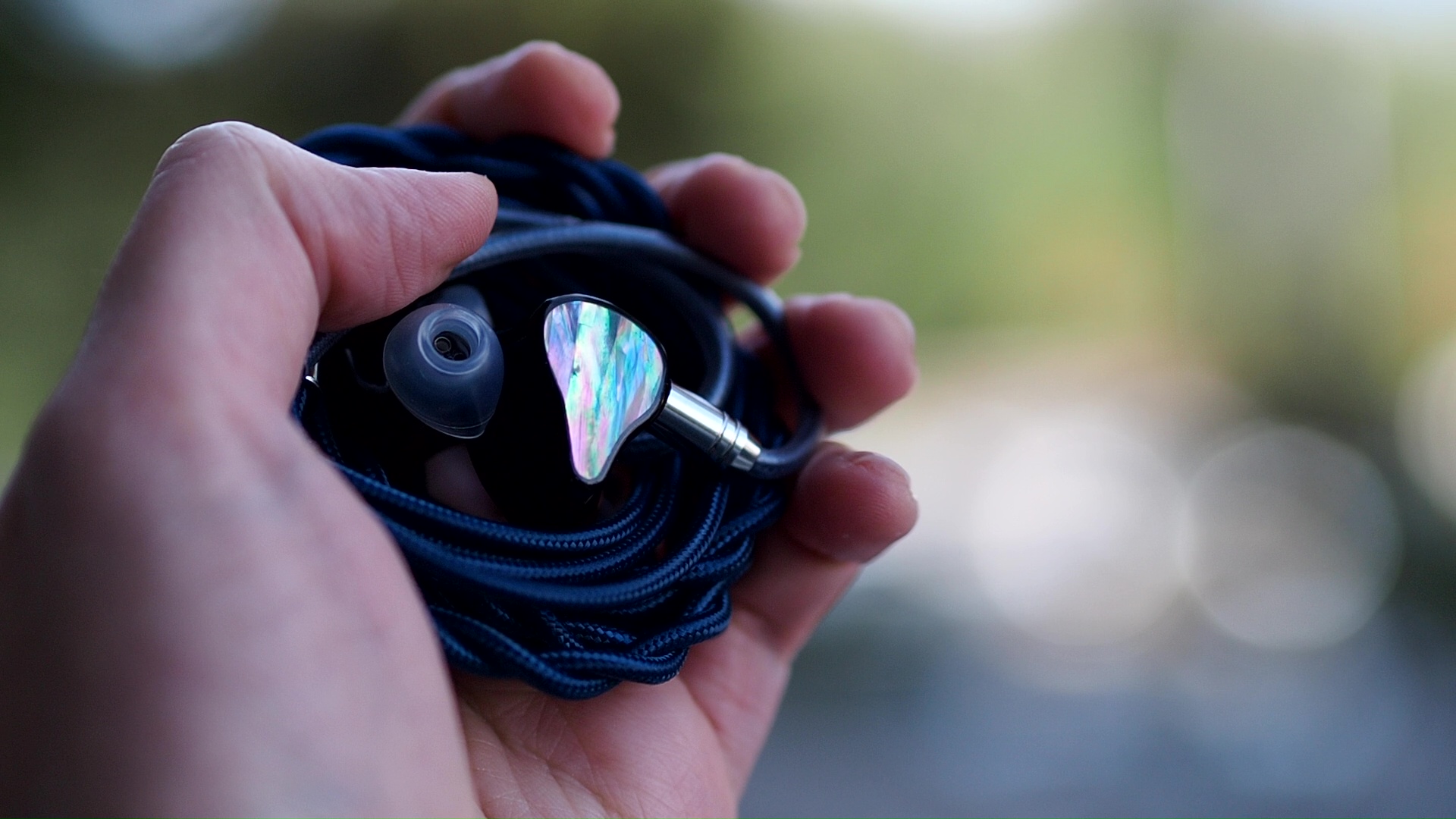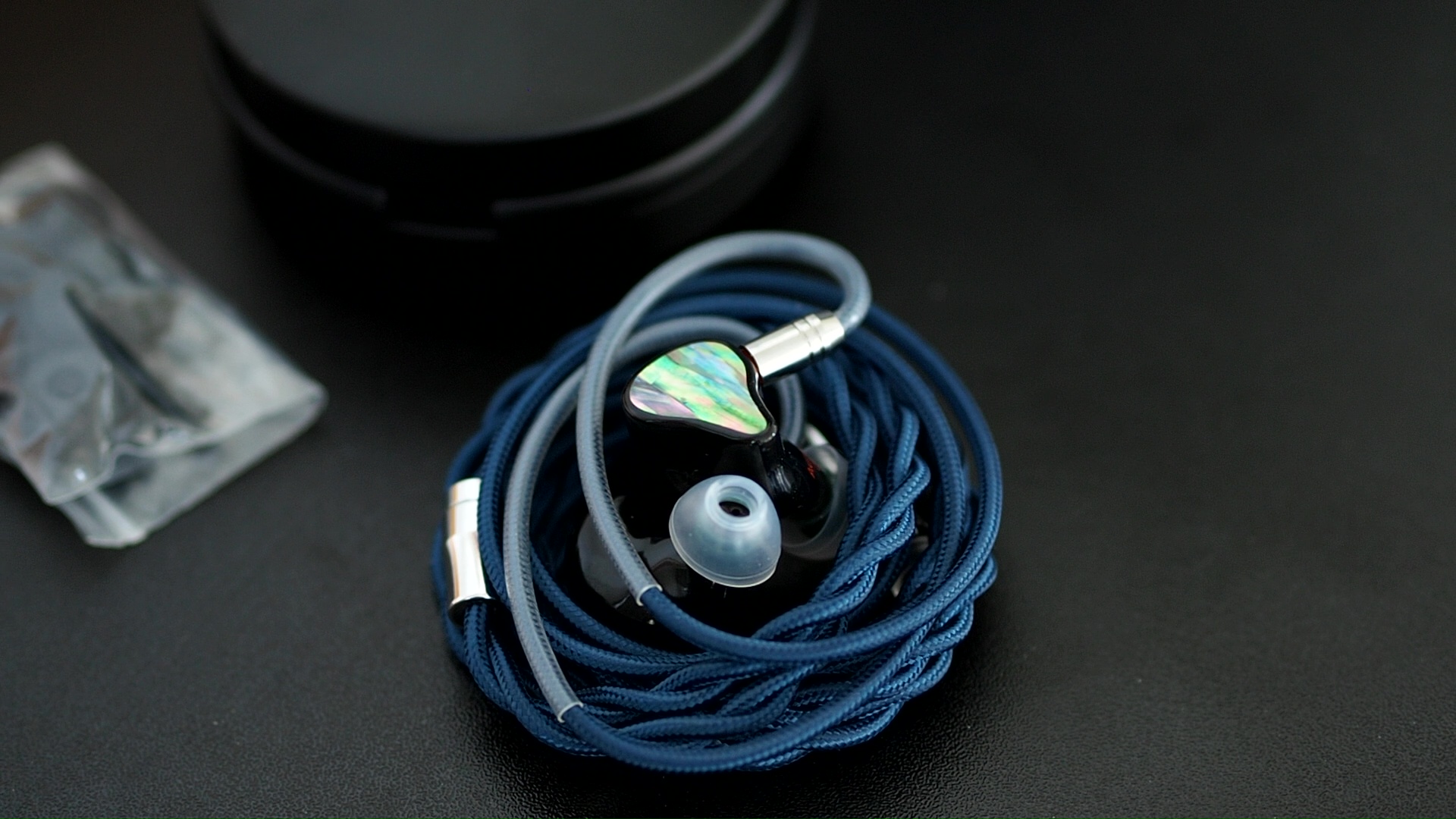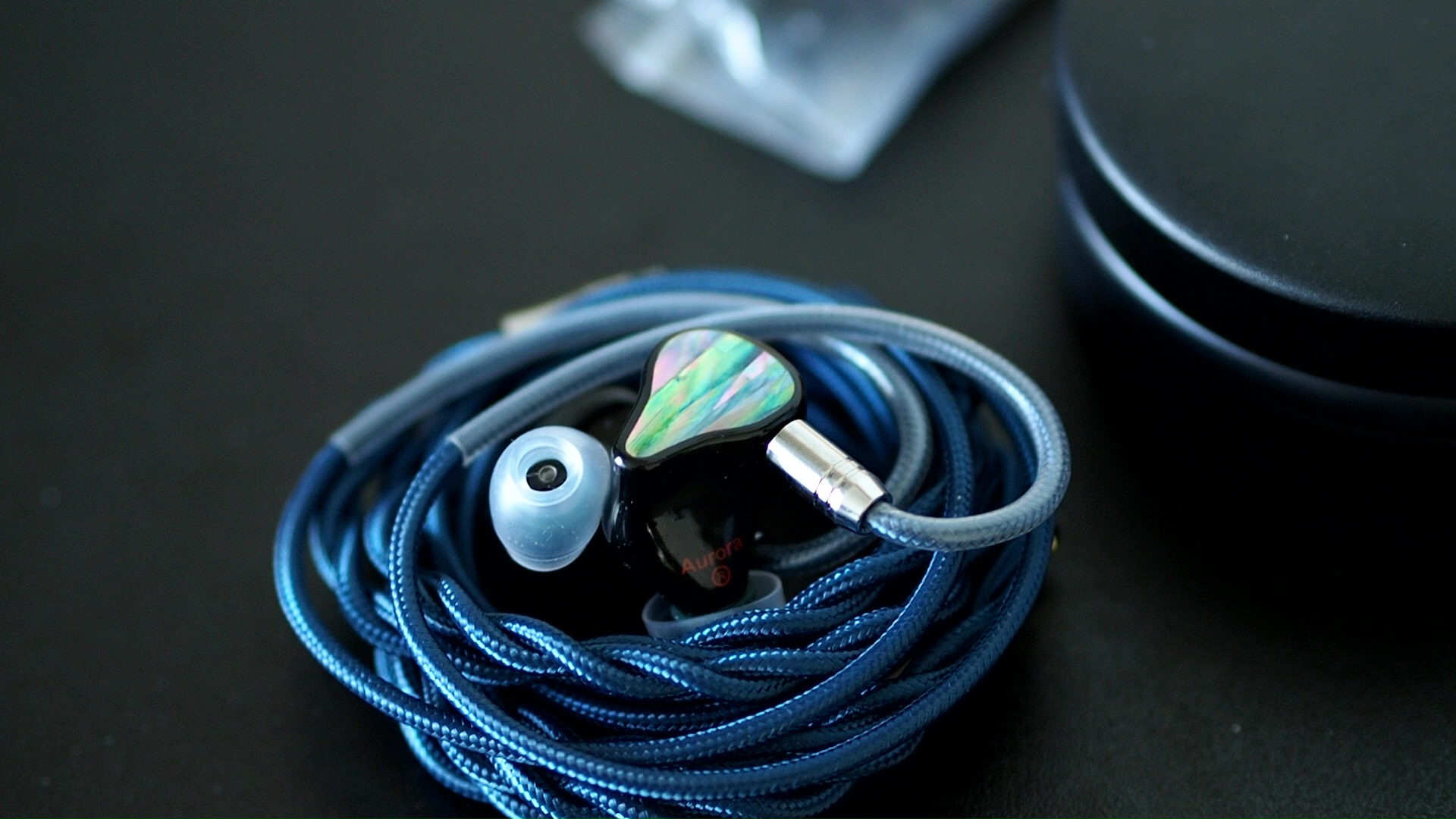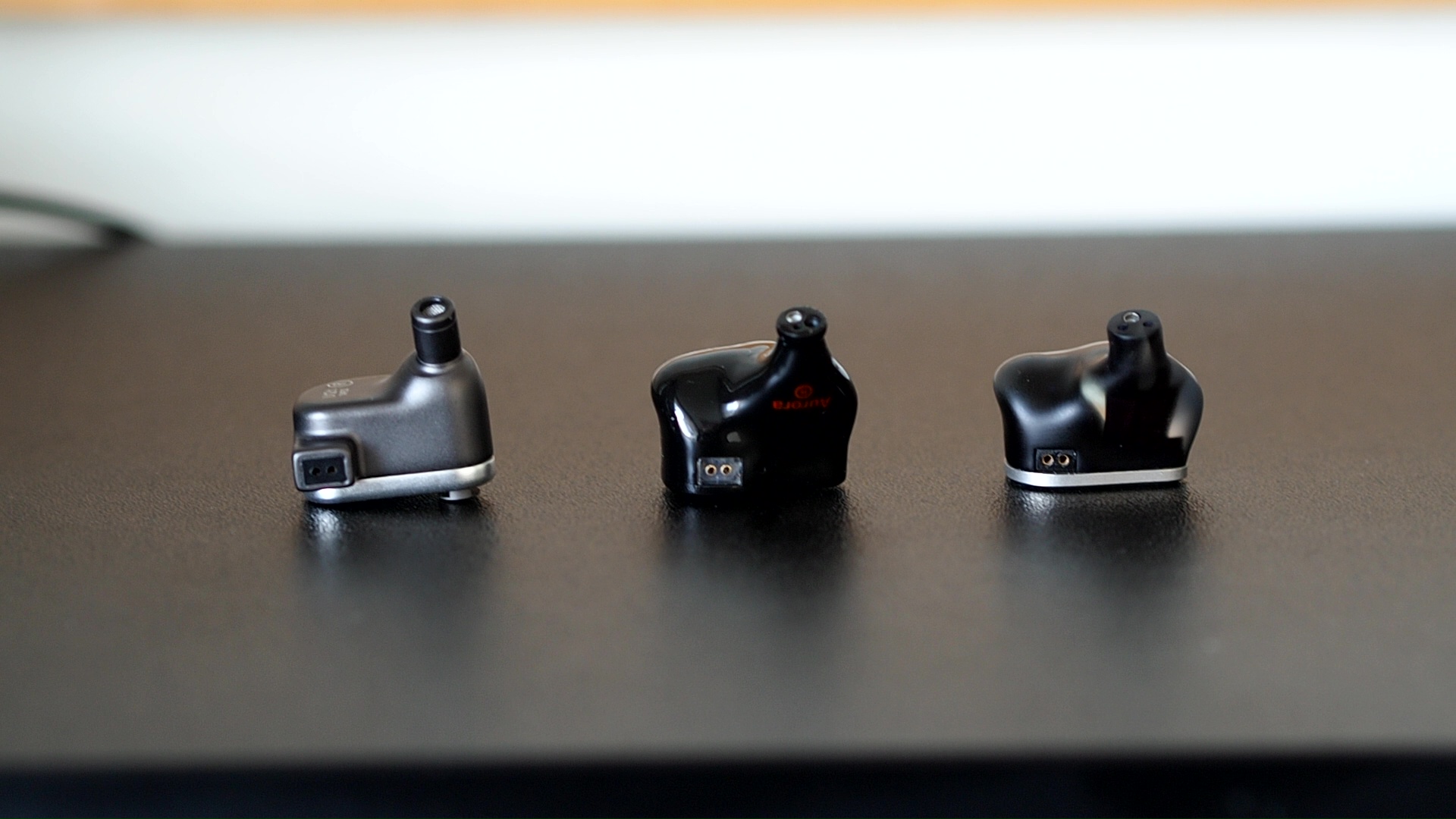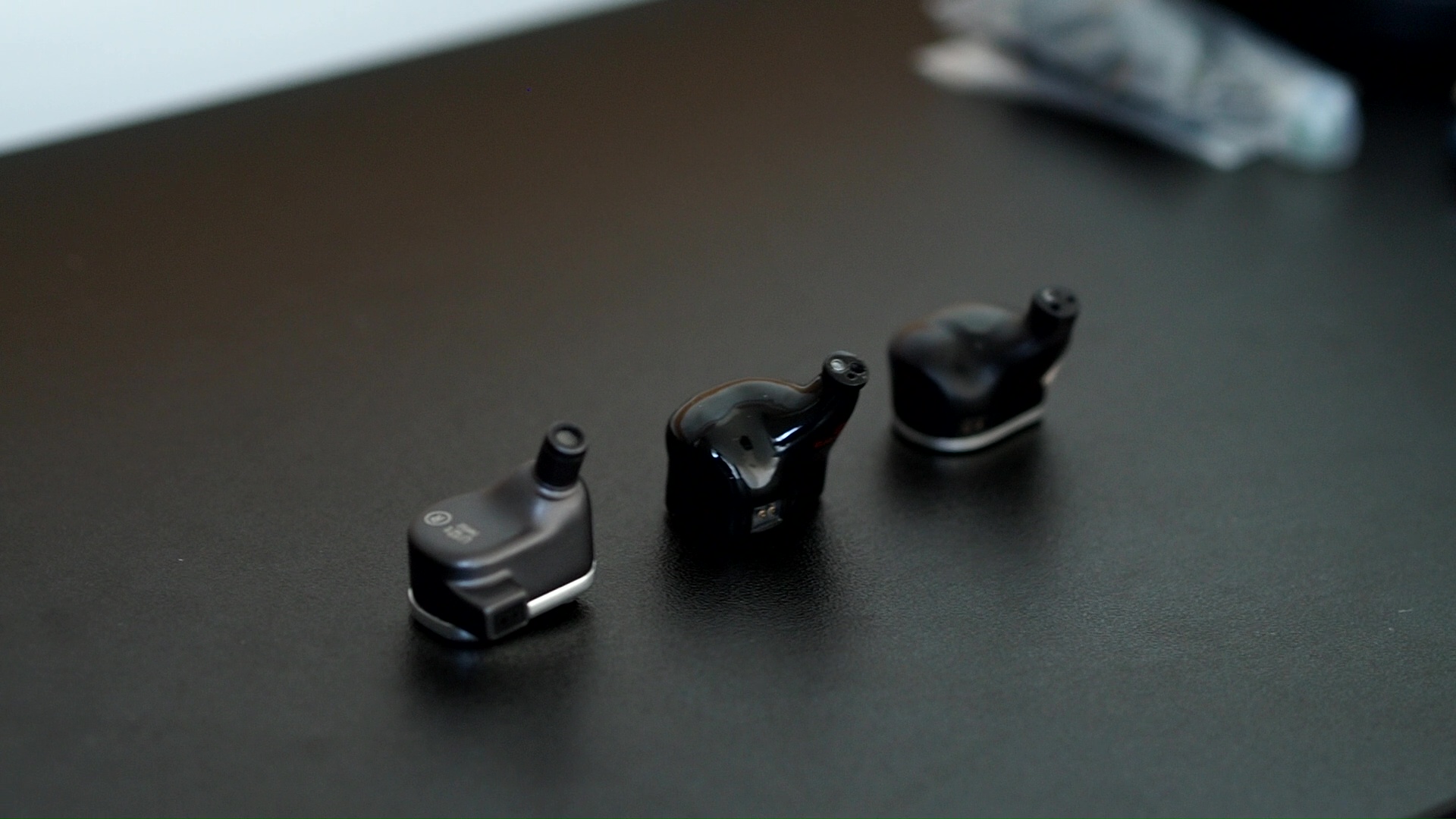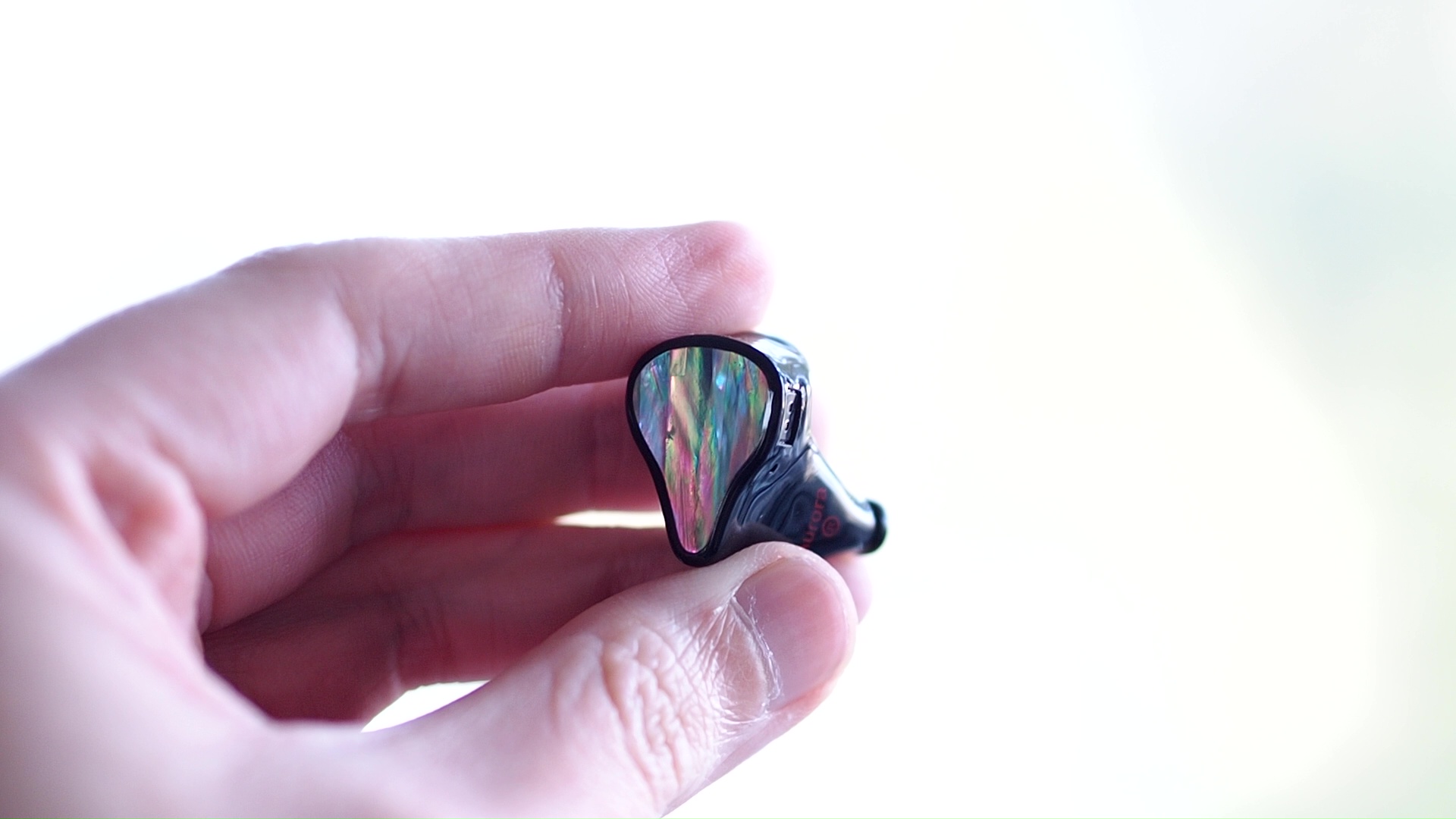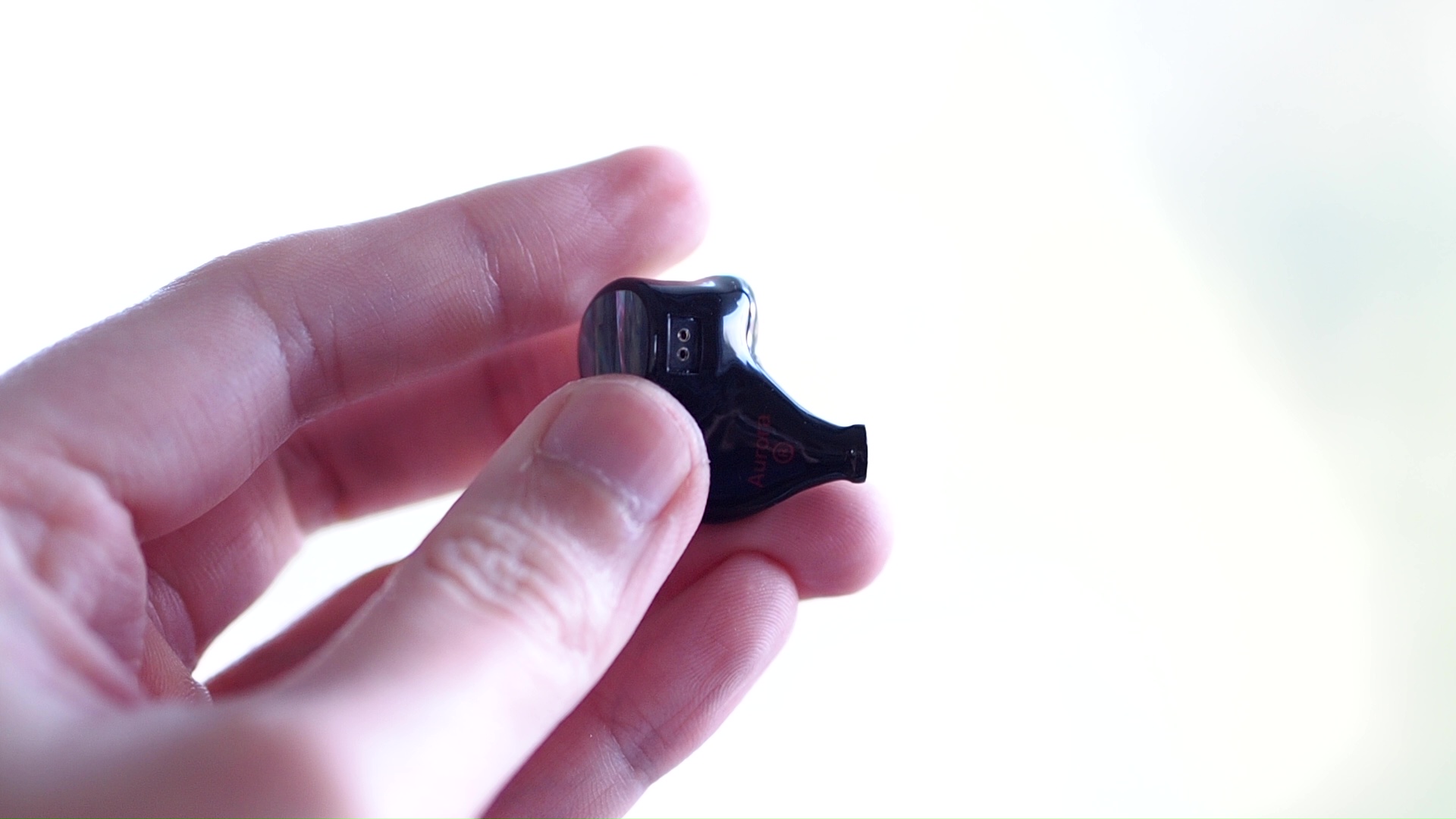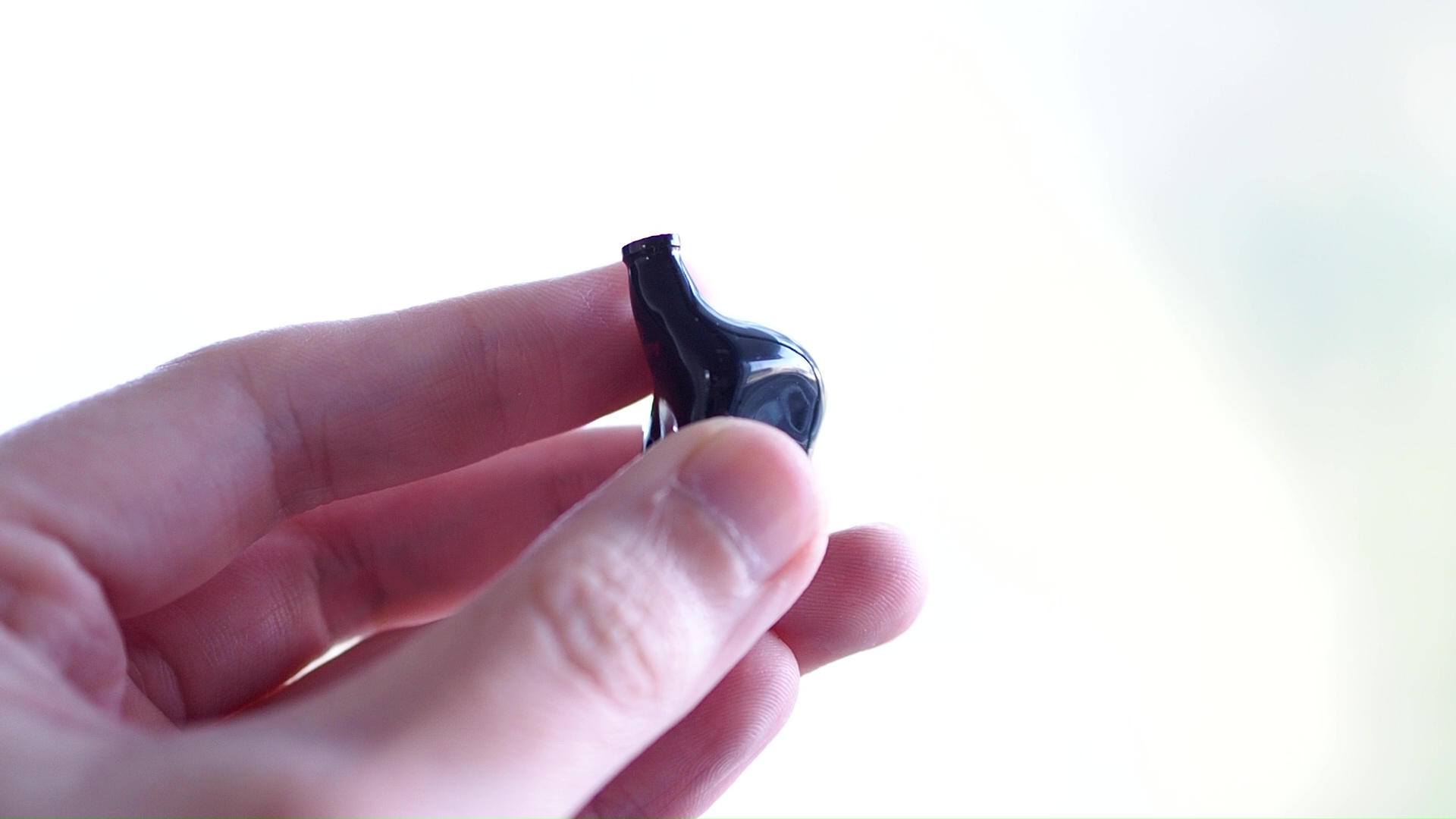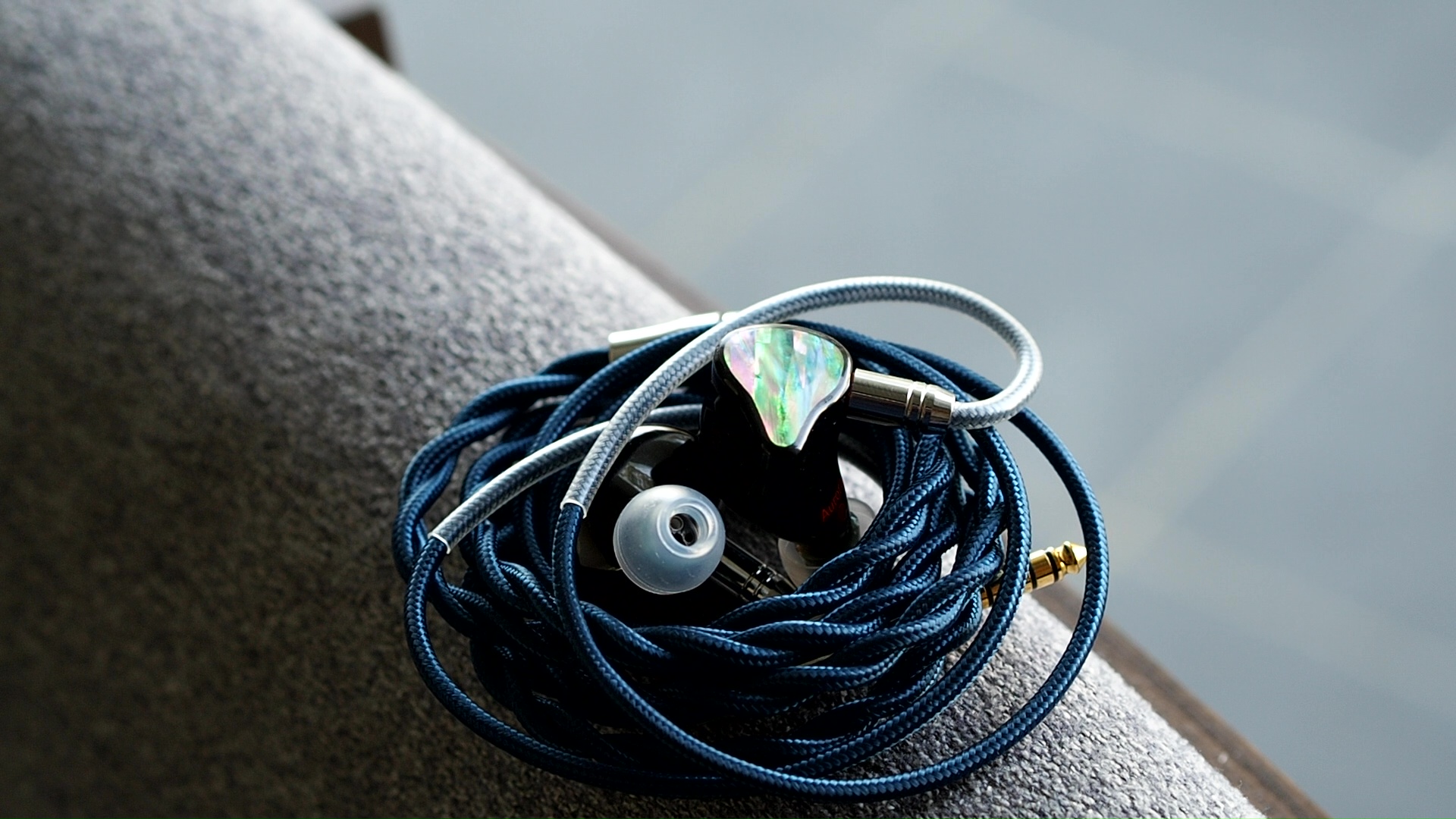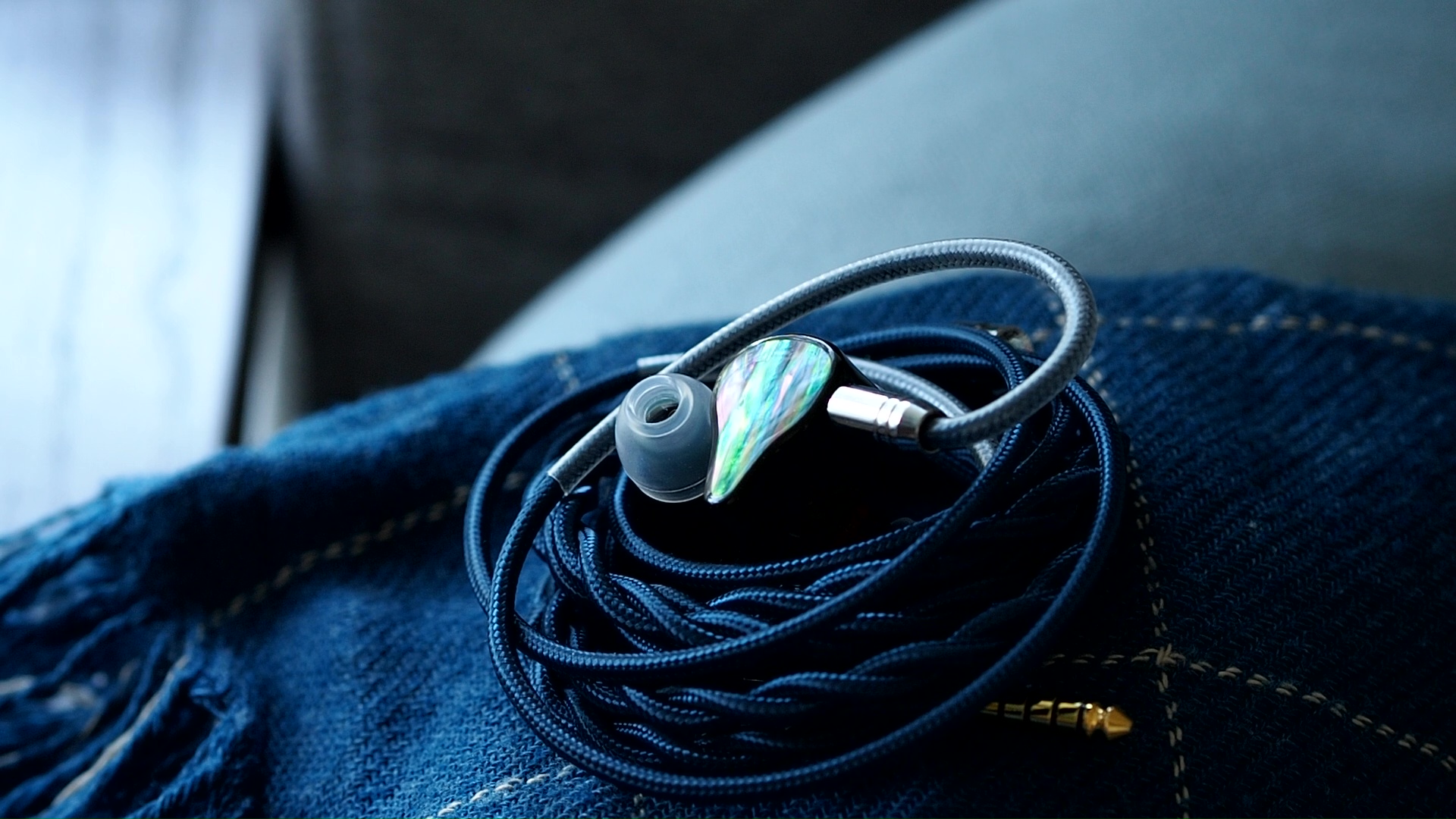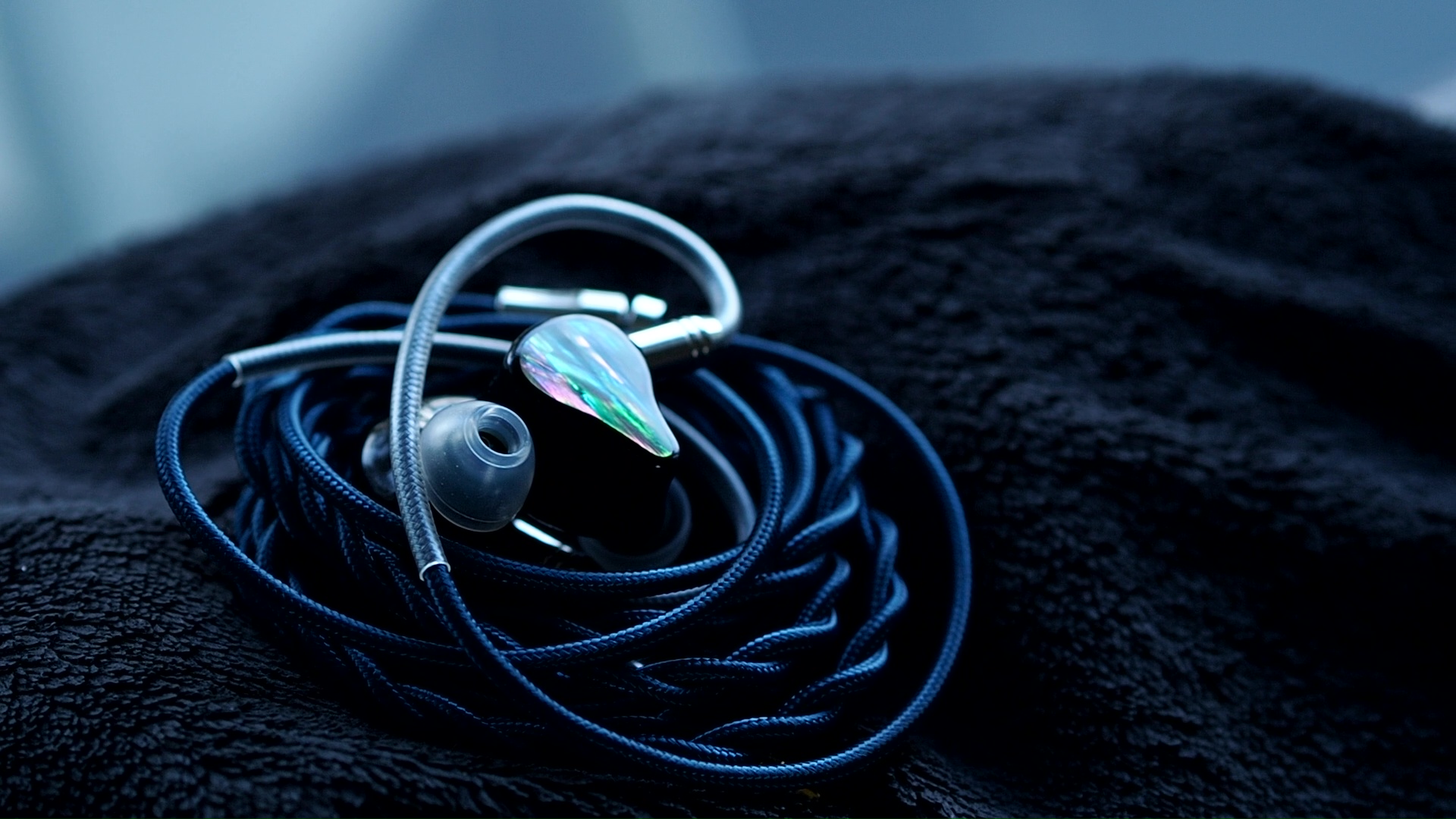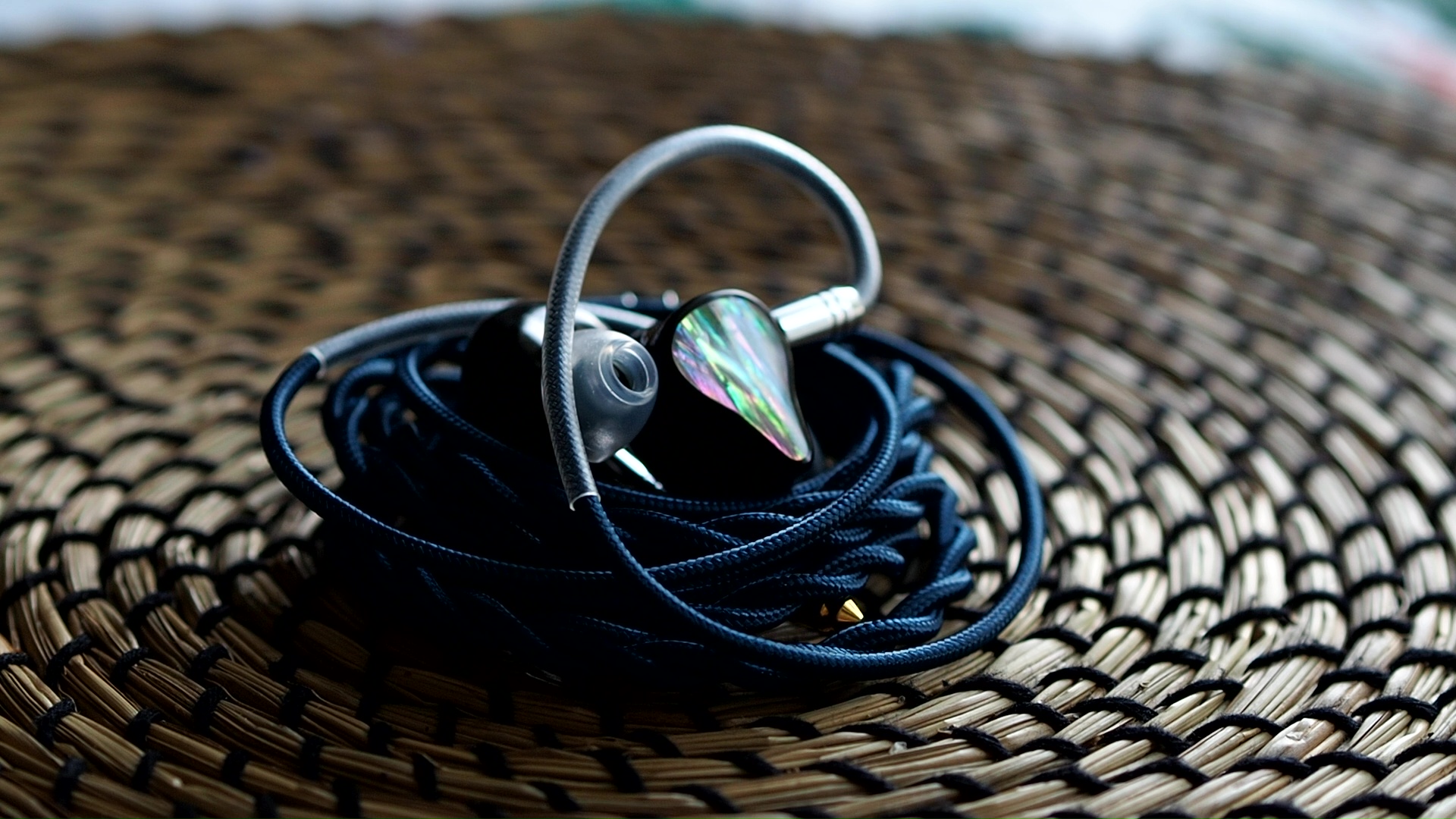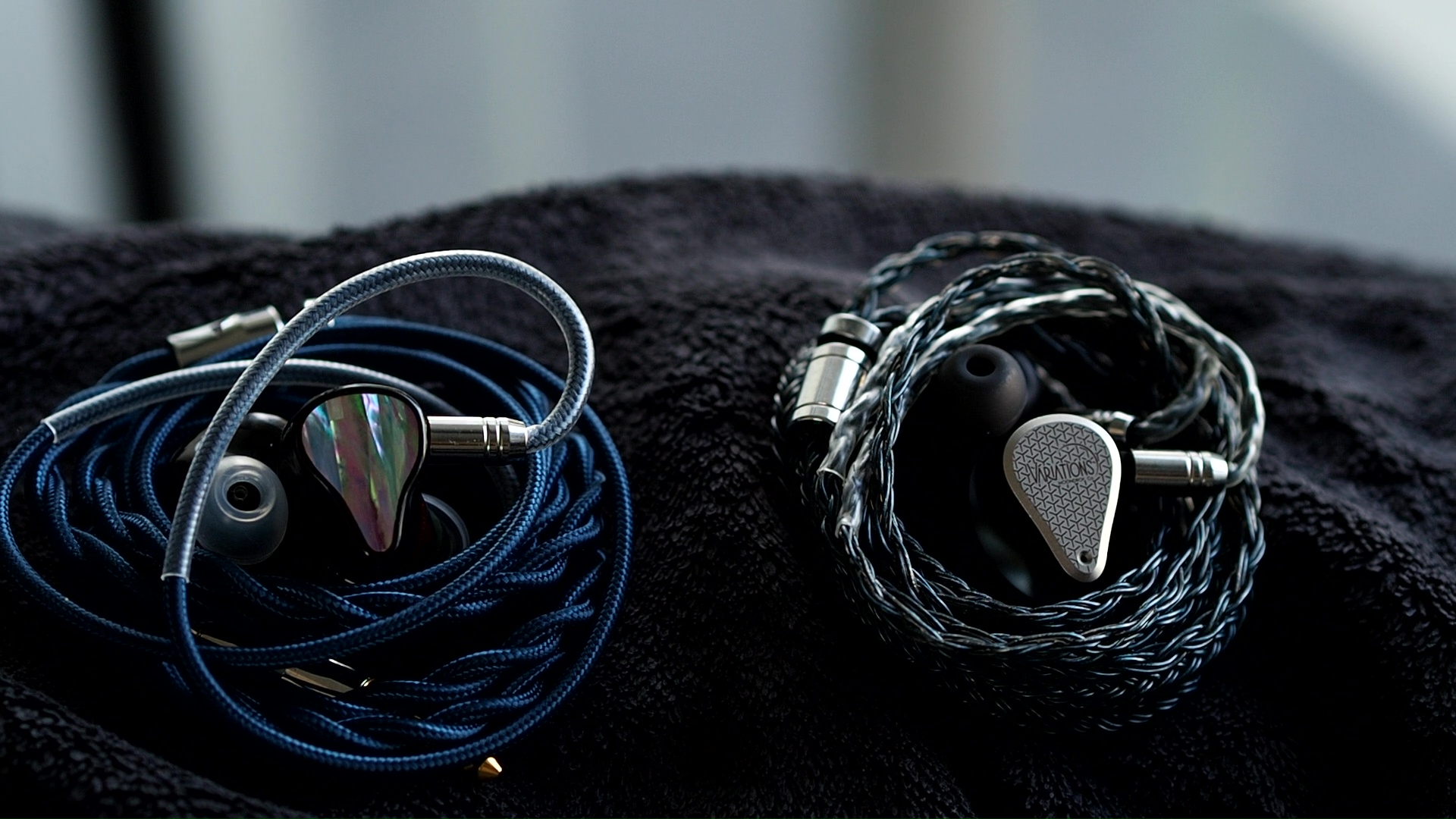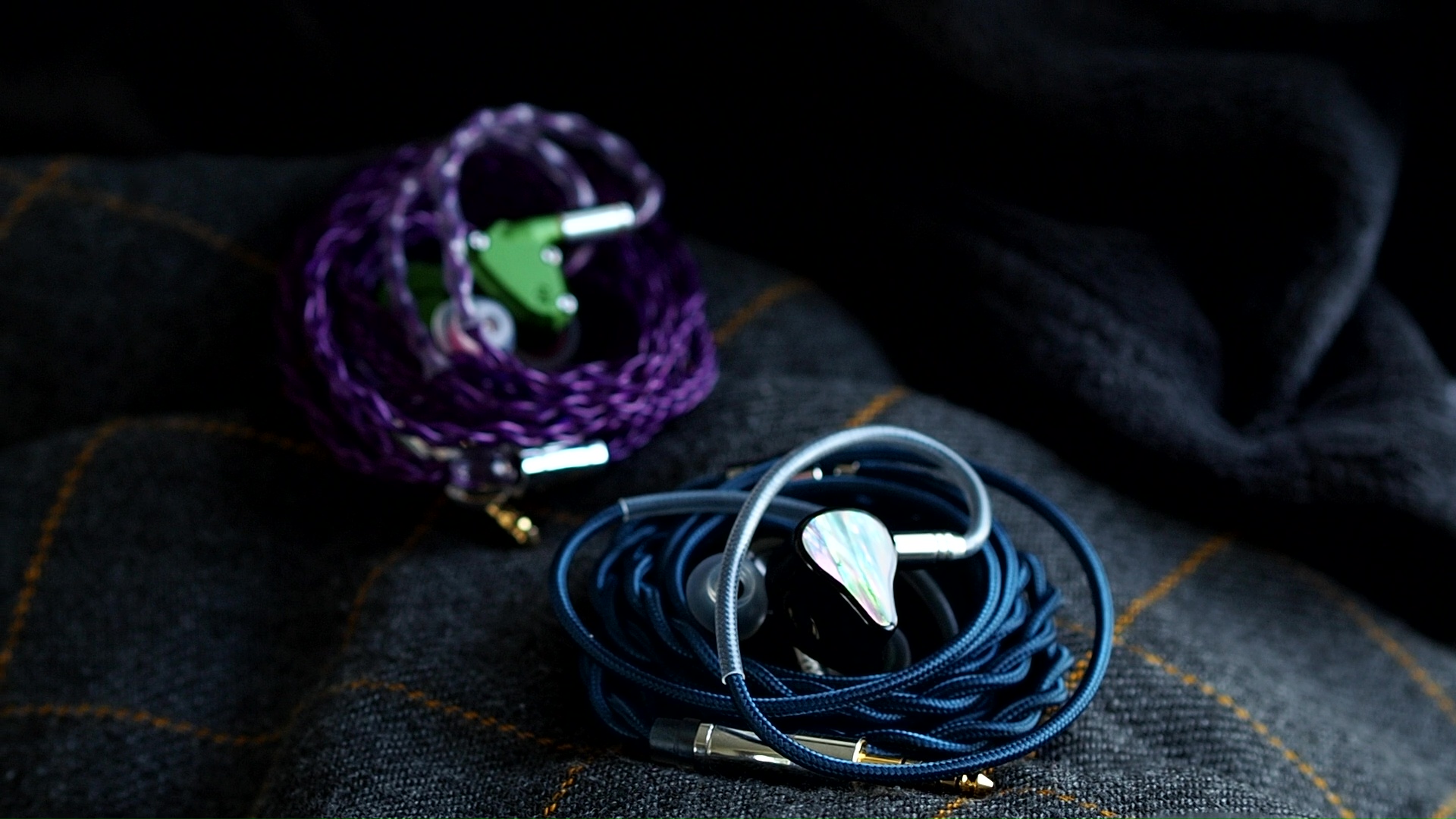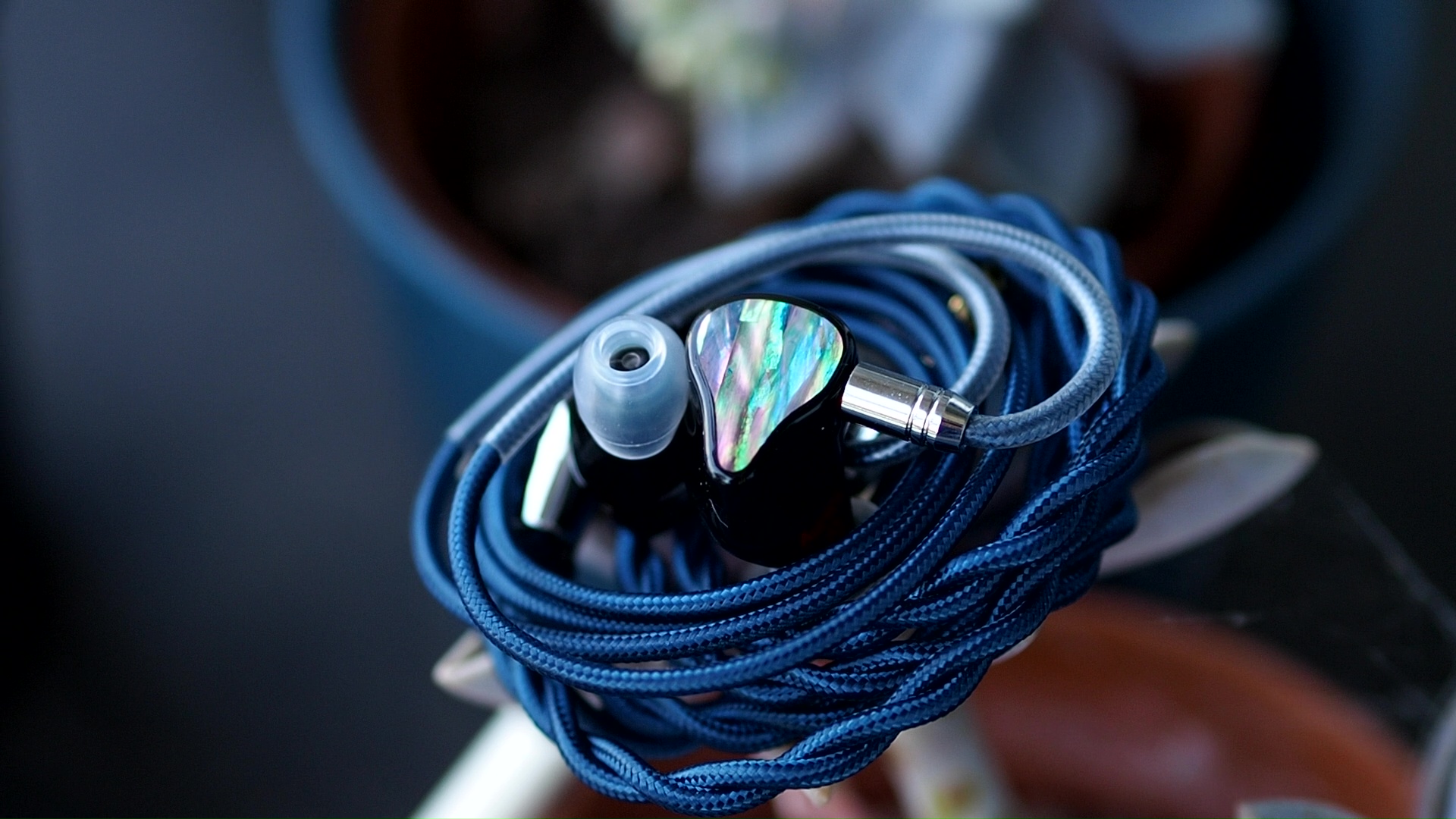Having had the possibility to try so many different sets in a relatively short time I felt obliged to go ahead and express my gratitude by trying to help some lost souls out there, just as I was when I first stumbled upon this weird hobby about wired earphones – "so yesteryear!", I thought ... I was wrong. Possibilities are seemingly endless and only by getting to meet the right people did I manage to jump onboard the train heading the 'right' direction without getting off-track thousands of times along the way. Make sure to understand the helping person's preferences and you too can find your footing and hit the ground running in no time.
A Quick Intermezzo About Me
I won't bore you for too long with personal trivia, however my quick & short background resume goes as follows. Currently I am 27 years old and more in awe of sheer power of music by the day. I have always been moved by music just that slight bit more than average, I'd say. My spending started with a roughly 200€ Bose bluetooth speaker back in my first grade of highschool. What an extraterrestrial thing that was in early 2010s. And it keeps on playing to this day – a true testament of quality. Also sounded fantastic back then, nowadays … yeah, not so much. Lots of BT speakers, TWS, car audio speakers, IEMs, etc., later bring me to this day when I truly consider myself an audiophile. What brings me the most joy beside listening to music is singing, so I am currently participating in a choir and challenging myself with solo vocal covers (check the links in my signature to hear my projects). Unsure where all this leads, but the journey itself is marvelous and life is nothing but a journey.
A Quick Word About the Company
AüR Audio is a young and rising Singaporean brand that specialises in in-ear monitors.
Just like most businesses it started as a small team, in this case of two actors. It came around as an idea by two friends, Nicholas Teo from Singapore and Abel Hsu from China. Abel handles the research, development and building IEMs, while Nicholas manages the sales, marketing and distribution.
Feel free to check out their current line-up on their website
HERE.
A combination of their honest work and reasonable pricing strategy - in today's over saturated market with some highly dubious marketing schemes - has manifested in a decently sized fanbase to quickly get established. After owning 4 of their sets, I consider myself a fan too. Keep in mind, since I am not made of money and I cannot be purchasing sets left, right and forward, all my impressions are still based on an honest-to-myself approach.
How The Review is Structured
I will start off by mentioning the packaging and accessories, then place it in my special trademarked graph and give it a score on certain qualities to reach the final star score. Those that are seriously considering a quality hybrid that is still within financial reach of many, please read the lengthy song examples below too to get as much of a feel on what to expect. I really tried my best to cover a wide variety to paint the sonic picture of the set for as many of you as possible.
I will mention some songs of varied genres and try to convey what one can expect from the AüR Audio Aurora. As sources I have been using my FiiO BTR7 on high gain and Venture Electronics RA2B-FE + Prime DAC (on the pic below). Certainly no lack of power and quite a different taste on both. Listening was done at a volume ranging between 80-90dB. I am using the Aurora with the Kinera Leyding cable and Feaulle H570 tips.
Disclaimer: I purchased this one at its early bird price nearly a year back now at a minimal discount. I am in no way incentivized to speak highly of this set.
Unpackaging & Accessories
There isn't much to say about this side of things. It is very spartan. Tips come in one flavour in 3 different sizes plus one of those double-flanged ones - I have tried plenty of tips (tip-rolling is always a wild ride, see below), but lately I have settled on medium-sized Feaulle H570 and these seemingly aid the treble and clean up the bass, but also make its fit just about perfect for my ears. The included case is a small aluminium(?) puck and not too thrilling but does its job of protecting the set very well. The cable is of very decent quality and handling characteristics are nice with no obvious drawbacks. I still decided to do some cable rolling, and the Kinera Leyding fit the bill of a beautiful aesthetic and second to none handling qualities.
Usual tip-rolling shenanigans and thinning the herd down to two finalists:
Equipped with stock cable and in the original packaging:
Equipped with Kinera Leyding cable (and temporarily Tri Clarion tips):
Another bonus pic just because she is a stunner!
Let's Get Going!
Graph & Scores
This trademarked graph I came up with does not come with a thick user manual. All you need to know is that sets further left are warmer than sets further right, and sets higher up are better technically than sets lower down. Those little yellow lines on both axis represent where sets with average technicalities and neutral overall balance lay. I have also added the AüR Audio Neon Pro (10BA), AüR Audio Aure (1DD+6BA), AüR Audio Ascension (1DD+5BA+2EST) to help form a better perception of where the Aurora slots into their lineup of sets I have heard.

Aurora is the warmest of AüRs. Upon first listen it might sound just a tad dull, depending on what your ears and brain are used to hearing. That in turn weakens the perceived technicalities from the get go, but after spending a fair amount of time with it, it impresses with certain technical aspects too. Aure is a brighter take and the closest technically to Aurora. Ascension and Neon Pro are a different sort of sets with much stronger technicalities which are noticeable instantly. The difference among those two is in perceived brightness where Ascension sounds more balanced than Neon Pro. That is also down to different driver setups in both.
Here is another visual idea I came up with to try and present how these four sets actually sound like to my ears. The curvy line represents the amplitude of individual spectrum, going all the way from bass through treble. The middle line upon which I wrote the line is what I would equal to flat - neither pushed nor attenuated. Essentially a graph, but without any x- and y-axis naming and numbers because I feel that can often affect our expectations and ultimately play with our minds into 'hearing the graph' instead of listening by ourselves.

Below are my scores on the Aurora in individual categories. All three subcategories of each of the frequency divisions can be rated 1-5. Keep in mind that I am scoring regardless of the price, so cheaper sets getting a 3 in any given subcategory is already good going. I had to approach this in a simplistic manner so to keep it easy to understand and compare sets. For now, I have not reviewed a hybrid, so it might prove interesting to see where adding BA's and another DD places the Aurora compared to my two previously scored affordable single DD's.

Aurora still does something unique that no other set I have tried managed thus far. It sounds exceptionally speaker-like to me – yes, similar to Venture Electronics SIE, an affordable single DD, in that regard, but a very different take on it. It must be a combination of factors which I am yet to untangle. First one being fantastic fit that lets you forget your ears are clogged with anything at all. And secondly, let's play detectives and try to find the culprit based on Aurora's graph below while remembering that I mentioned this for SIE too, so let's compare their graphs – there are some similarities: non recessed mids, a slower pinna gain starting from roughly 800Hz to 2,5kHz, similar slight peaks at 6 and 8kHz and then quite a large drop all the way to 15kHz, where they both peak again, both extend after 15kHz somewhat too. Now to talk about noticeable differences which might explain why SIE still sounds even larger to my ears: warmth on SIE extends all the way up to 800Hz where pinna actually begins, after pinna there is a slight reduction between 3 and 4kHz before ascending towars the 6kHz peak whereas Aurora descends towards that little 6kHz peak, 8kHz is the most pronounced peak on SIE's graph (taking into account the coupler-induced peak it is similar to 6kHz), whereas Aurora starts descending already from its tallest pinna gain point at 2,5kHz, the valley between 8kHz and 15kHz is much steeper on SIE and 15kHz is boosted by about +14dB while on Aurora it is about +8dB from the lowest point. Hm, definitely interesting and something I will be keeping an eye – no, ear – on with any upcoming sets I get to hear.
Aurora's graph:
SIE's graph:
14 Song Examples For the Curious
Song #1:
First minute of this song offers a quick sample to test piano, bass, trombone, and sax timbre as well as female vocals and the perception of stage.
Creep by Scott Bradlee's Postmodern Jukebox feat. Haley Reinhart
This song's lowest register is covered solely by bass, so getting that right is critical. Aurora does it in a specific manner with rumbling bass which maintains composure and does not bleed too much into low mids, so following the bass throughout is simple. Note definition of the lower register is what is sacrificed here for the sake of rumble and fascinating unique decay – surely down to two high-quality DDs installed in this fashion. Texturally, bass instrument feels a touch too muddy to really offer what the song requires – slightly less so on FiiO BTR7 as source instead of VE Stack, probably due to FiiO's more prominent high mids. Still, to get the ultimate of bass resolution I would choose another set (where BA's cover bass) for really dissecting the information within low frequencies. By far the most energy is focused in the mids. Allowing all the instruments their space and delivering them in a natural way is what a set needs to excel at. Overall width is not too mind-blowing, but I never really cared about largeness of stage too much in the IEM world – what matters to me is that the use of space at hand is good. To elaborate further, I require that instruments do not step on each other's toes when the recording allows it and is meant to sound open. Aurora does well here where it never feels boxed in and notes never feel trapped. It is primarily a vocal-driven piece, so Haley needs to be upfront for it to be to my liking. Happy to report that she is not holding back in terms of positioning. She is, however, just a bit more nasal sounding than on sets with maybe a bit less carefully done pinna gain with a later peak in the frequency spectrum. She never gets shouty or uncomfortable throughout this song on Aurora which can be an issue quickly if pinna gain is too prominent or any nasty peaks are present in high mids. When the song gets a move on a bit before its end, it is indeed slightly more difficult than usual to pay attention to every performer's work due to not having the widest stage to work with. That said, all performers are within their bubbles, still feel sufficiently life-like and carry good note weight. How you might feel about that depends mostly on whether you are the sort of guy that ascends the mountain and enjoys the vista as a whole or prefer dissecting individual elements with that panorama. Nevertheless, Aurora somehow manages to sound speaker-like to my ears here, despite clearly being more of an intimate presentation. Piano sitting close right can quickly get overwhelmed by all other accompaniment in this song, thankfully with Aurora there is no such issue to report. Mids are timbrally wonderful, no unnaturalness to be found here. Treble isn't too busy in this track. But I can see how some might find it a bit disconnected with the bass which is categorically different. Sibilance does not occur no matter the volume. Sax and trombone lack a bit of bite. Cymbals are crisp but reduced in their 'zinginess' and too safe. Treble is extended but it does not feel like the highlight at first but spend an hour at which point brain gets accustomed and catching detail becomes second nature. Final score: 7.5/10
Song #2:
Angelic male vocal slowly transforming into a sharp male vocal and the usual rock accompaniment. Allows to better understand different sets' capability of perceived emotion, layering, timbre, etc.
Castaway Angels by Leprous
Guitars and that alienish sound in the background are carefully done and present the foundation in a mesmerizing way. Possibly not the most truthful guitar replay due to that slightly warmer tilt to the overall tone. Imagine listening to the guitar in a smaller echoey room instead of in a studio. His soft and dreamy vocal joins the aforementioned duo and it adds to the angelic setup – prime example of how a song can quickly lure the listener in and feel very aptly titled too. Going into the chorus we get carried even higher and closer to the heaven when he brings his head voice into the mix in such a well done fashion. Nothing to point out as a negative regarding Aurora quite yet. Going forward layers keep on adding on top of each other. Those ever so delicate cymbals are rendered naturally. Strings join and add to the epicness of the arrangement. Aurora is keeping up and having everything positioned in its place while forming a gorgeous sound picture. Drum kicks were the first thing to 'bother' me because of their lack of definition and punch, thus covering the bass guitar in certain parts towards the end. His vocal really gets a move on in the last third of the song – here is where I could do with a bit more bite and definition to really continue carrying the message in this very crowded tune. The back vocal saying »!now there's a chance« at 4:29 just before the magical ending of his vocal part and the guitar bringing us to an end had my skin covered in goosebumps. This song gets an easy 8.5/10 for me on the Aurora.
Song #3:
Let's plug those guitars in and stop being gentle with the drums. Pace, space, rhythm, male vocal.
The Pot by Tool
The overall character of the song calls for a set with tremendous technical prowess and slightly tamed low mids to avoid thickness and that slow feeling of presentation as well as high mids to avoid sharpness with all guitars and drums showing off. Aurora manages the high mids very well and never am I worried to get absolutely overflown with energy and get an overload of messy information. Low mids, however, are just a tad too soft and pillowy to really carry this song's rhythm in a groovy fashion. Not the ultimate set for hard rock and metal, but also not too disappointing because overall technicalities are above average and instrumentation is kept separated. Vocals are done tastefully and never burried under whatever might be going on around them. Male vocals are overall very well rounded and lack absolutely nothing except for sibilance which is a good thing. Overall, the attenuated low treble means guitars can feel a bit sleepier than they ought to. It all results in simply just a calmer presentation of this great tune. Not really meant for it, 6/10.
Song #4:
What a gorgeous tune to listen to … while testing bass texture, layering, and the fine minutiae of each guitar pluck, like us audiophiles do.
London Paris Cardiff by Dominic Miller
I begin by really getting into whether those guitars carry the story in a captivating way. While being wonderfully natural without excessive bloat or piercing details, they do not feel the most crisp and following individual plucks is not that joyous. Still, not really meant in a bad way, but maybe the BAs are not up to the absolute pinnacle standard in detail retrieval. All of this is floating atop a thick layer of bass that continues throughout. Very well counters the BAs in providing a majestic decay and very good texture. It could be argued, however, that there is a significant difference here between how BAs and how DDs go about their job – in a slightly disjointed fashion. Not too bothersome, but apparent. And that is only amplified in this particular song due to the minimalistic arrangement with guitars and bass. Those occasional hi-hats are very easily discernible, but somewhat shy and lacking the ultimate in air. Never sharp, though, which could easily occur had treble extension been tuned too spiritedly. The disconnected feeling in certain parts brings the score down to a 6.5/10.
Song #5:
If this does not bring me close to tears on the set, the set is doing something wrong either in guitars, female vocals, or overall sonic balance.
All About You by Sophie Zelmani
Upon first listen, the beginning part felt just a bit too hollow in those powerful guitar plucks. When it gets supported with the low end it picks up a bit, but it once again strikes a weird balance of emptiness to the notes. Then, she joined as well and felt out of place and as if she was singing another song altogether. Hm, not what I expected. Let's start problem solving. Check the gain on my BTR7 – High gain. Check again not to have any weird EQ chosen on the BTR7 – No EQ. Okay, maybe this song is simply not meant for the BTR7's rather analytical and sterile presentation. Switch to VE Stack. YES! We're back on track. Guitars get a much needed body and each note is supported much better. With other parts joining I can also sense just a better balance among them – Sophie feels like she belongs into this song again and throws all of her heart out. Another alarming difference was a wider overall sound field. All is well again, so let's concentrate. Now, does this song move me as it should on the Aurora? Close my eyes and listen again. I am not sure. Great sounding – yes, moving – not so much. I blame only one thing for this – lack of midbass warmth to add a layer of that comfortable feeling of cosiness. Enough has been said in other tunes about guitars and female vocals too. Final score: 4.5/10 – lacking emotion here.
Song #6:
Let's continue the theme of calmer but so powerful tunes.
An Evening I Will Not Forget by Dermot Kennedy
Piano and calm weighty male vocals are very engaging without any pronounced issues. I find such setups are difficult to keep interesting and it depends fully on production quality and playback chain capability. Piano's individual notes could be kept even clearer but it becomes a double-edged sword quickly. Get the clarity right and quickly it sounds just a bit too sterile. So here I can happily report Aurora walks right in the middle and delivers both note definition and note weight. A dreamy sort of synth joins to provide another layer. It's kept nicely at bay but can be followed in the background on the Aurora. When Dermot starts to pour his soul out the grit is very palpable and touches the heart through the Aurora. 'S' and 'Sh' sounds are very safely tuned even for my 27-year-old ears, however attenuate that area too much and overall balance starts sounding skewed and unnatural – thankfully not the case on the Aurora. It simply means Aurora can be listened to at (very) loud volumes too and maintain its composure. 8.5/10.
Song #7:
Upbeat pop rhythms with plenty going on.
The Thrill Is Gone. by RAYE
Not really the sort of stuff I listen to often, but I cannot deny the nice flow and a simplistic arrangement really getting a groove on allowing to just float away. Not too easy to judge individual aspects when you start grooving, though, so Stop it immediately, Nik! Okay, let's see. Bass is quite playful here and it needs a nimble DD to keep up and deliver individual notes with authority and lets notes stay apart to really follow the awesome bass line throughout the song. Female vocals are never shrill and annoying, even in such Pop beats which are tuned quite bright usually. RAYE is very well positioned for my taste with just a slight forwardness to her vs the rest. She is supported by all the back vocalists and their voices are a nice combination to keep the energy up in certain parts of the song where they join. It is because of that and a fantastic bass performance that this song is just a joy on the Aurora. All the microdetails can be picked out and you won't miss any paramount info to make the song a whole, but what really stands out is the bass and the vocalists. Just as it should be, I feel. I listened to this song three times in a row and tried justifying it by having to write about it, but frankly, the third replay was solely for my personal enjoyment and you get no extra info due to it Haha! Amazingly done, 9/10.
Song #8:
Jazzy love tunes for the ones deep in love and us audiophiles.
Since I Fell For You by Willie Nelson
I could use just a bit more spaciousness in the beginning to really feel as if I were there. Imaging is quite decent, though, so it makes up for the intimacy of soundstage. Timbre of brass is a tad digital due to lack of bite I would like it to have. When all performers are doing their thing Aurora still provides sufficient space and focus for each of them. Male vocals are once again just about perfect. The seductiveness and wettness of his vocal is so descriptive and it makes the listener engaged. Drums lack a bit of tactility and end up sounding just a bit congested and as if the drummer is hiding behind a curtain. Overall very inoffensive but lacks in vividness and broadness. 5/10.
Song #9:
Slow and moody jazz. Requires spaciousness, timbral accuracy and a playful vibe.
Rosita by Coleman Hawkins, Ben Webster
Here the recording is done differently than with the previous song and Aurora manages to impress even with the perceived soundstage height and width. Then again, since the recording is done this way it sounds even bigger again on other IEMs. Focus is put mainly on timbral qualities and here the story repeats. Piano is on the 'slower' and more musical side, while brass and drums both could be more daring. Still, this one is enjoyable in a different sort of way. Makes it easy to float away into your dreams. I would know, Aurora is one of my favourites to keep by the bedside. I could not suggest this set to someone who wants their jazz to sound vigorous and atmospheric, however it can do such tunes to quite a high standard as well. 7/10.
Song #10:
Oh, welcome crazy bass lines, please make yourselves comfortable along with tasteful drops and story-telling male vocals about an ill-intentioned lady.
Love is a Bitch by Two Feet
How low do you want to go is a question Aurora happily provides to its listener. Whatever the answer might be, Aurora delivers in an authoritative fashion. Not a basshead set per se, but a well executed L-shape that never really feels lacking in subbass. Song starts with a storm going on and the rain panning around the head while a guitar lays a foundation. Starting seconds are a good test for soundstage dimensions and rain presentation, which is essentially band-limited pink noise. Welcome, bass, please make yourself comfortable. And comfortable he is. Just a joy again with these longer lingering low notes. None of them feel stressed or overly amplified. I had to switch back to the BTR7 to see if the lower power changes the joy factor in a deal-braking sort of way. I first noticed the slightly more reserved soundstage width simply by following the rain noise. Bass notes come in, moment of truth. BTR7 definitely rumbles just as hard or even more pronounced than the VE Stack. Where it falls short is in the individual bass notes feeling like each of them has a story of their own, yet coming from the same family. On BTR7 the lowest notes are much heftier than those higher bass notes within the bass line. It all culminates in an overall presentation that feels more strained and uncontrolled than on the VE Stack. This definitely proved to me that Aurora, despite being rather easy to drive, really loves power and scales well. This song gets a great score of 9/10.
Song #11:
Not really something I could jam to for long, but I used just the last minute which can tell a whole lot about the set's bass and highs.
Handle With Care by Andy Stott
DDs are getting a workout of their lifetime. It's such a difficult bass line to get right, Aurora rumbles and decays about as wonderfully as I could wish for, especially at this price. There is a reason this double DD setup keeps reappearing in various sets. When it comes to subbass it is all about the capability of the drivers to move a 'large' amount of air (relative to their size) and keep the movement under control without bottoming out or reaching high distortion figures. What you can do to aid those drivers is to feed them nice clean power. Venture Electronics Stack does just that and Aurora awards me with a gorgeous low end in this electronic specialty. Quite a large part of the song is up in the higher registers – I must say I do miss the precision and airiness of something like ESTs or some other BAs. I would like more crispness and dryness to some of these sounds in order not to sound blurred. This affects the end score which I'd put at 6/10.
Song #12:
A pleasant and somewhat creepy look into the unknown. Needs serious bass to form the template and good imaging.
Satsang by Sumiruna
To really get one to look around and feel scared this song requires a technically capable set. Aurora tries its best and still renders this weird tune enjoyably despite not being a technical monster. The reason for Aurora's success despite average technicalities lies in its tonal balance. This song should be bass-driven and Aurora lends its helping hand to present it that way. What that ends providing is a creepy story-telling aura for your mind to wander and try to make sense of the sounds. I must have heard this song about 50 times by now on various sets and still I struggle to come up with my own story – case in point that this song is a journey without obvious whereabouts. Genres such as this can quickly get dull on subpar sets and Aurora does not fall victim to that. Do not expect all the details to be as crisp as on brighter-tuned sets or EST-equipped sets. In that regard, Aurora makes you work hard (but feels so fulfilling) to really catch every grain of sand on a sandy beach. 8/10.
Song #13:
Definitely a competitor for best song title. It also gets the juices flowing and makes it impossible not to tap your feet or nod your head.
God is in the Soundwaves by Armin Van Buuren, Xoro, Yola Recoba
The clapping sounds and her voice are on the more reserved sound, definitely not sharp ever. She could use just a bit more forwardness to really make me alert and listen to what she has to say about this soundwave god. She stays clear from any sibilance, and it is not a too pronounced frequency response dip like certain sets go about dealing with cutting out sibilance. That way of reducing annoying sibilant peaks could quickly backfire in sounding unnatural and that luckily is not the case here. When the bass comes in it shifts the balance into a very enjoyable L-shape just as Aurora is supposed to be. The individual bass kicks are very powerful here, unlike the slight midbass calmness would suggest – a 3W per channel amp such as the VE RA2B-FE doesn't hurt. The rumble and fullness are impressive. Those higher cymbal-like and rattlesnake electronic sounds are not too detailed, however the effect on the overall enjoyment factor is minimal. A 9/10.
Song #14:
Turning up the wildness to 11. Aliens are upon us.
Alien Alert by 1200 Micrograms
Such a creepy sort of track. The distortion and his eerie introductory speech are a marvelous way of getting this track on the way. Punch is strong and quick. The layer of bass these two DDs playing in unison can provide is something to behold. I only heard a bass as tight and driving in very high-end car audio systems which are known to be able to provide a ridiculous amount and quality of bass due to their low cabin volume if executed correctly. Yes, this is the set I would choose for this song despite its slightly subpar technicalities versus some of its direct competitors. It is a journey. The mids are never veiled nor too far back or in your face. The balance among bass and mids is done tastefully. Highs can be a bit disjointed due to their intentional reduction which are countered by a tsunami of bass. Tremendous performance warrants the Aurora an amazing 9.5/10.
This concludes my song examples and hopefully you find some information useful to compare to your listening habits!
To Sum Up The AüR Audio Aurora
To sum up the Aurora, a bass and mids first experience with reduced but sufficiently detailed treble makes this one an easy recommendation to anyone with bass-heavy electronica or, due to its naturalness and timbral brilliancy for those who get their music fix mostly from calmer acoustic and jazz tunes – with just a slight preference towards male vocals prior to female. This set has been pushed into the background due to other AüR releases since then, but it's a thing of its own and no other sets really offer a similar experience.
Thanks for reading and stay wonderful.



































